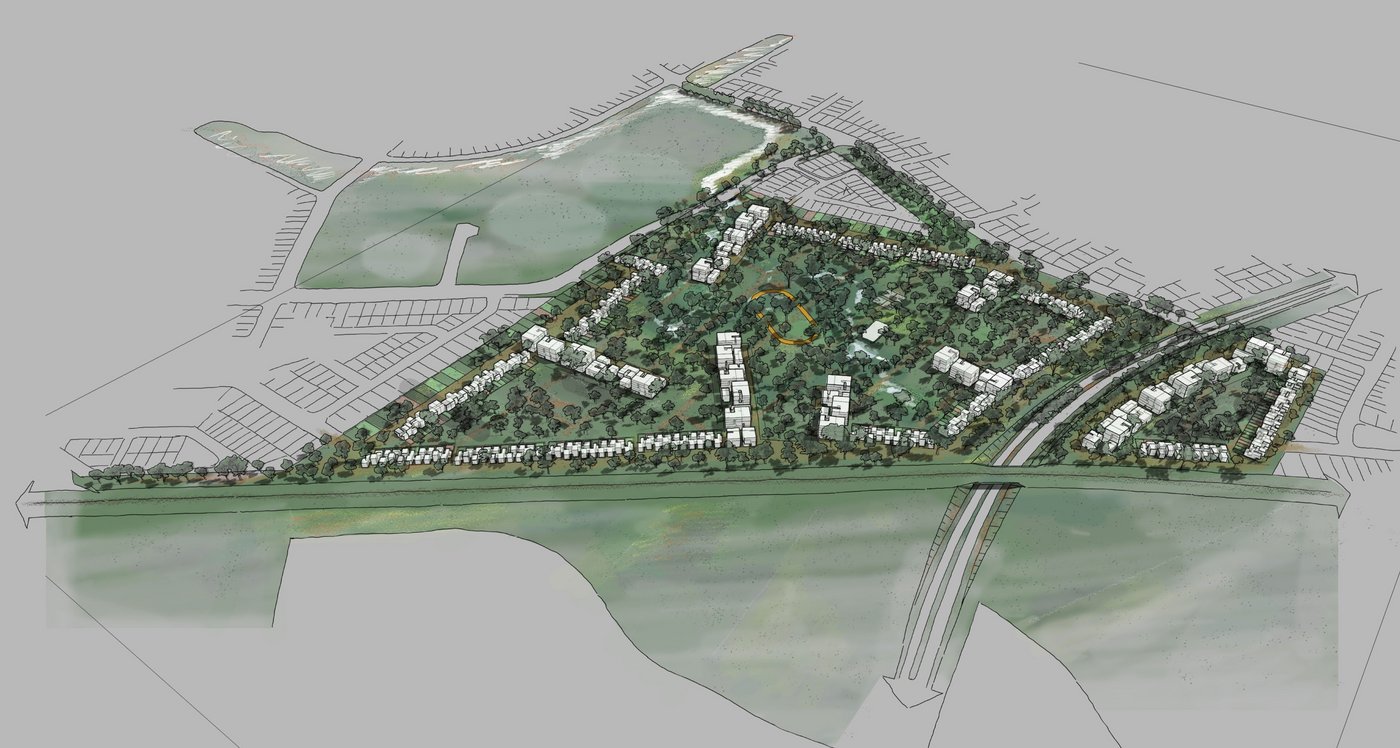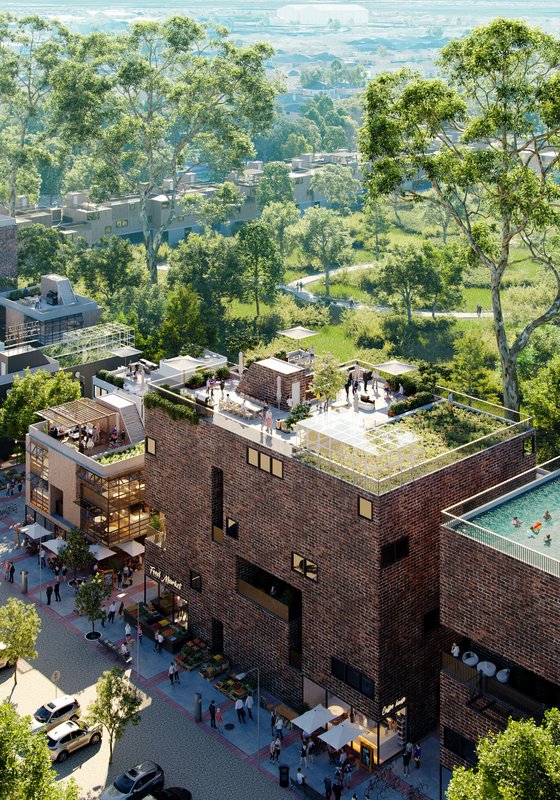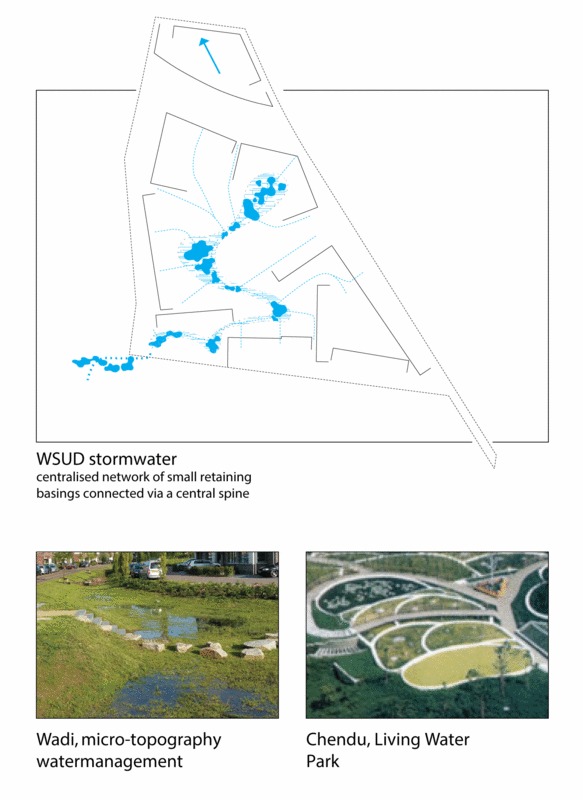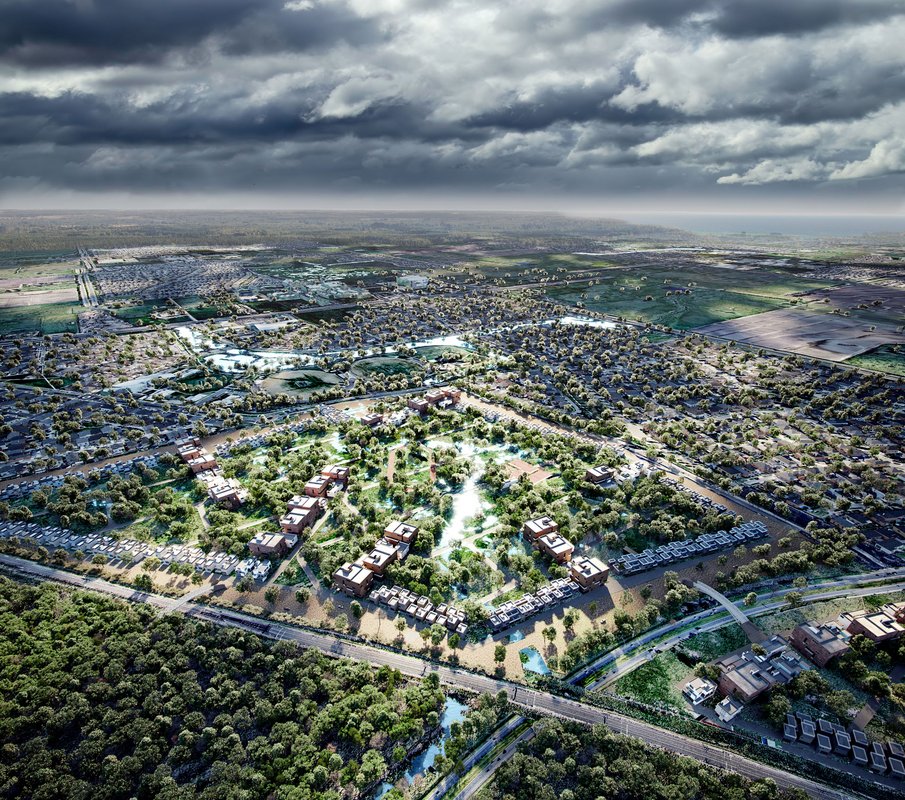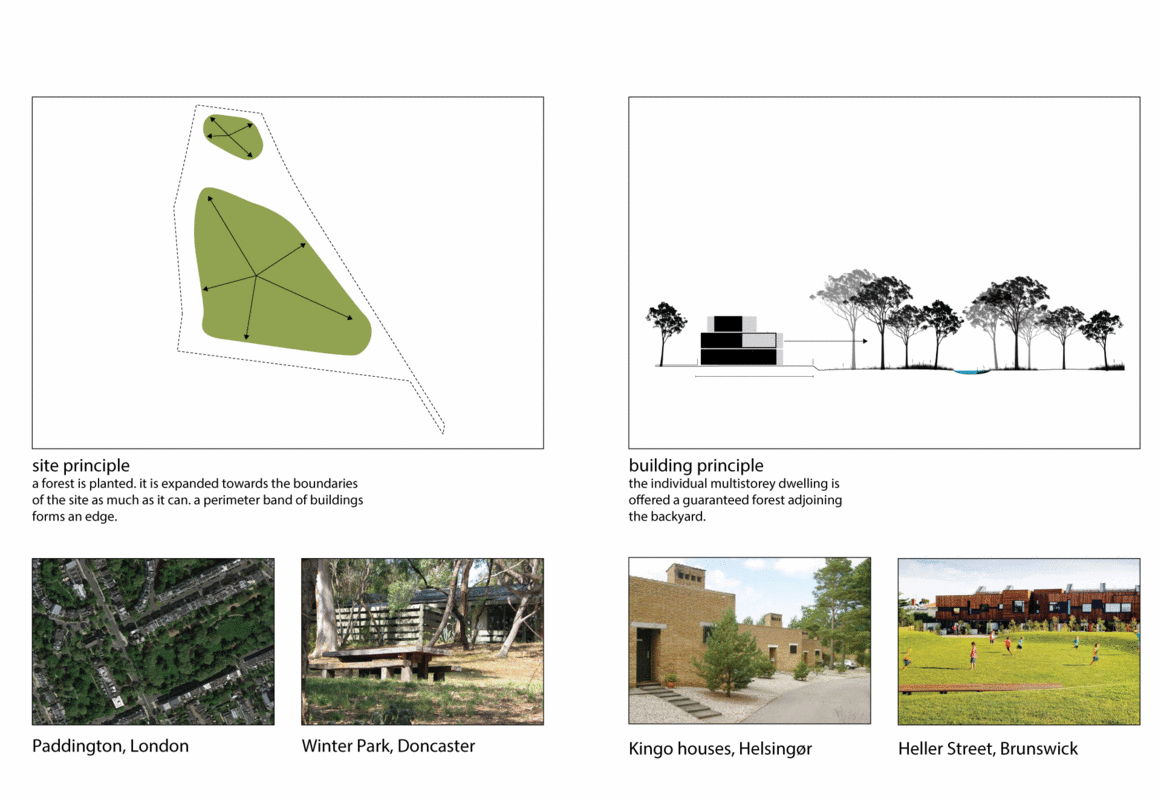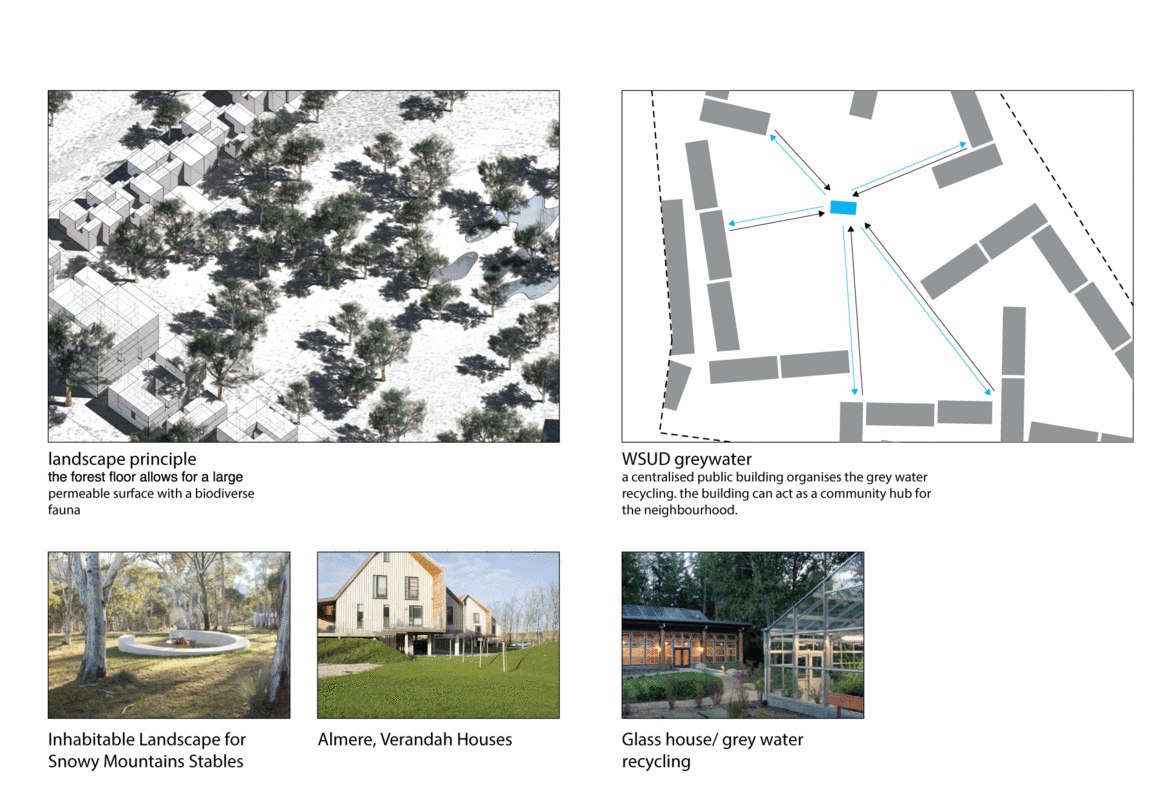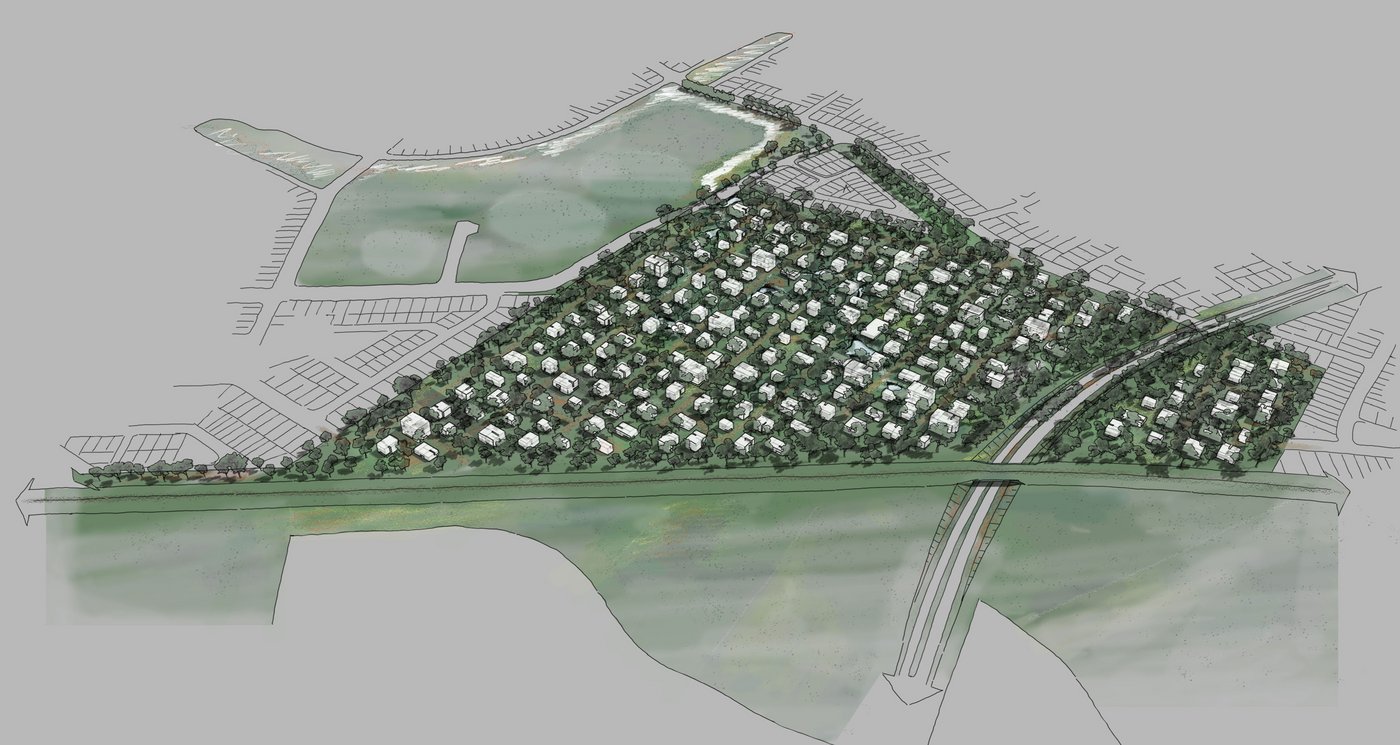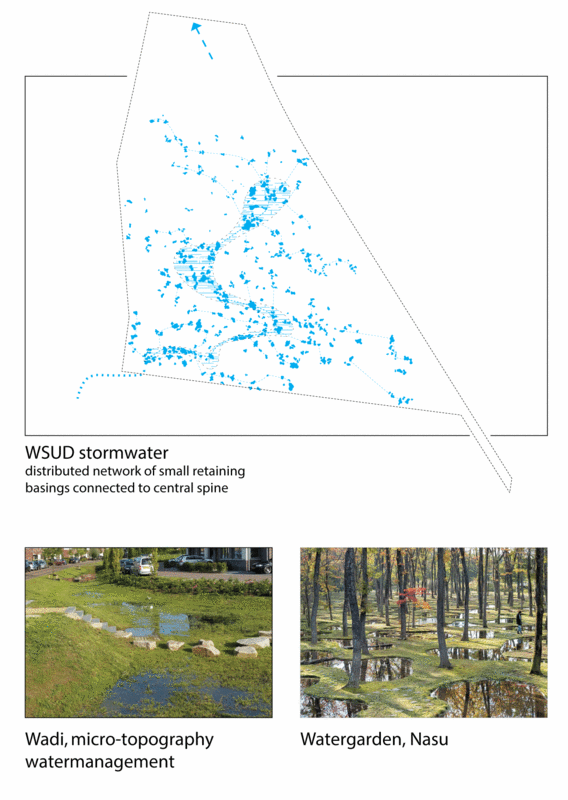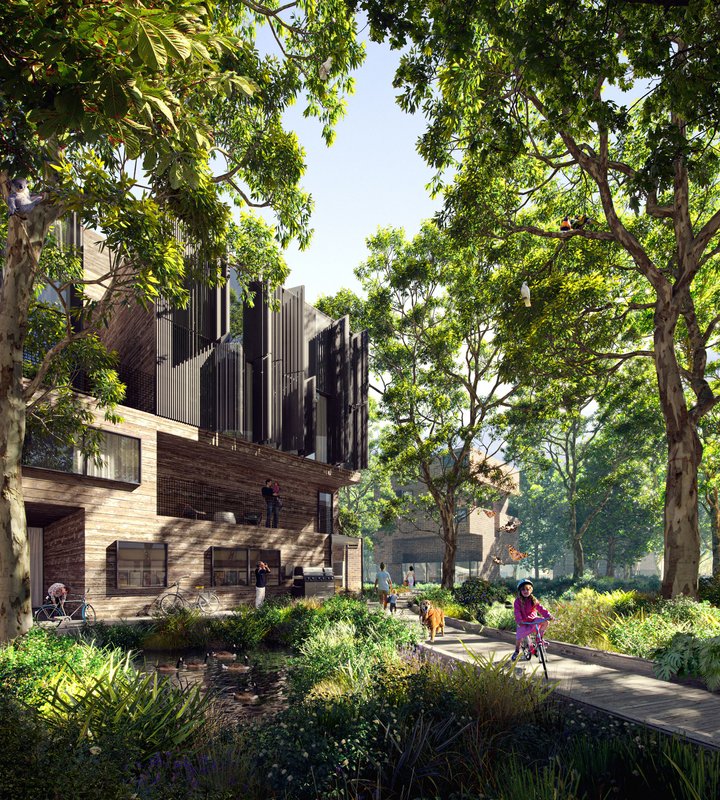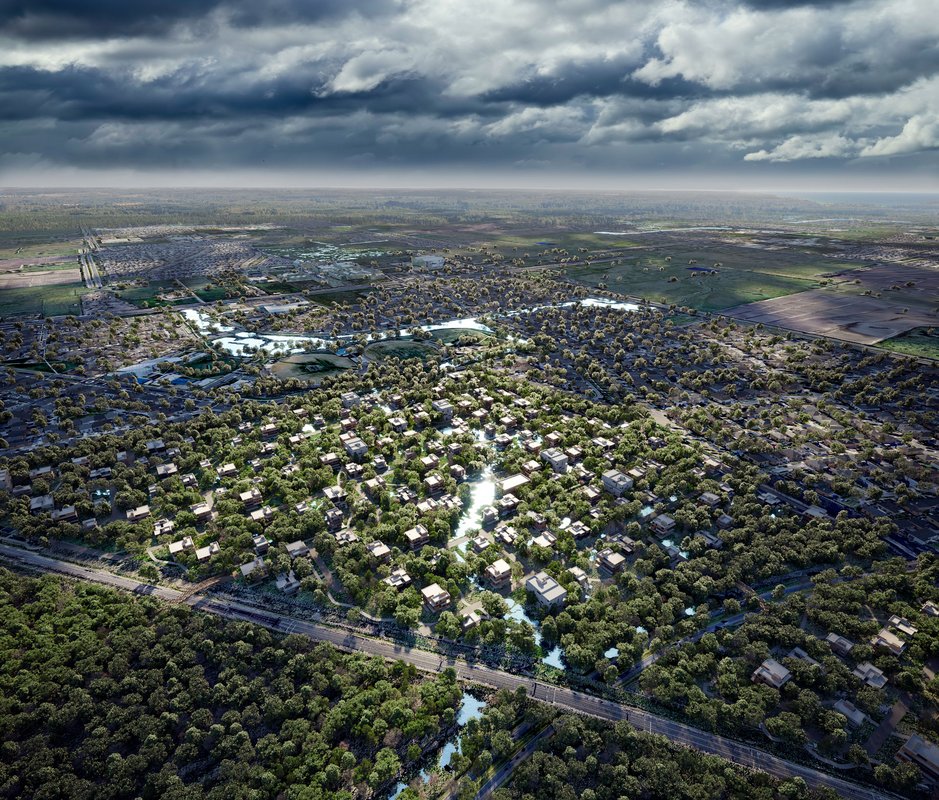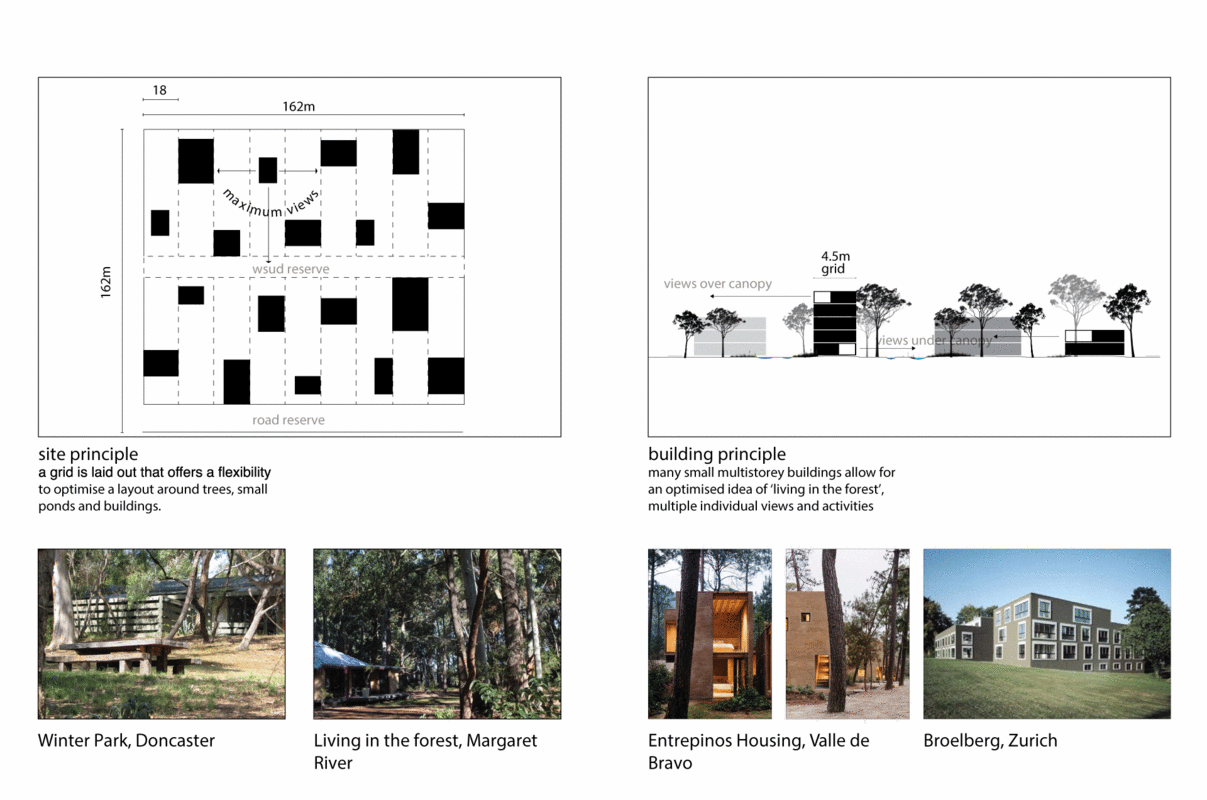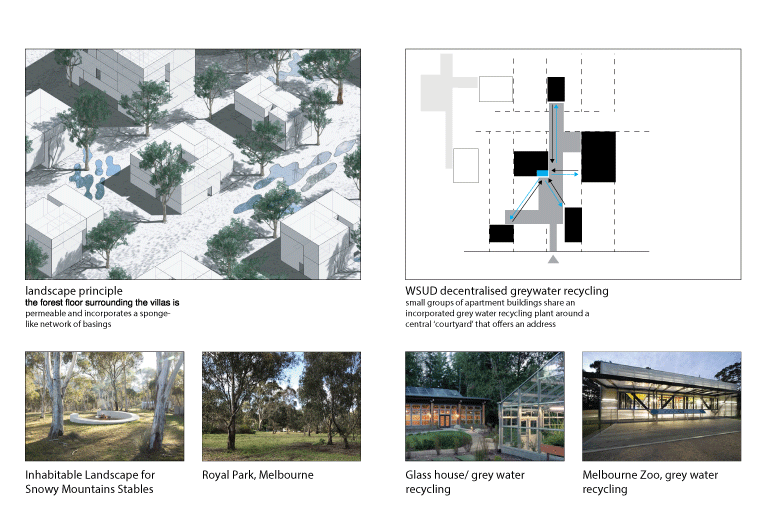| code | aquarevo |
| project | vision framework: housing density study |
| type | water sensitive urban design |
| size | 48 Ha |
| budget | - |
| client | crc water sensitive cities |
| collaborators | spatial investigators, chi chee goh, duy phan |
| location | lyndhurst, cranbourne aus |
| year | 2019 |
| status | completed |
We tested two different options for our clients:
1. Living around the forest
The proposal seeks an upscaled low-rise perimeter block approach that suggests a large open space at its centre. ‘Living around the Forest’ aims to combine density in suburban contexts while increasing the scale and quality of the public amenities. The proposal includes linked housing typologies that benefit from a huge landscape that brings cooling, ecological lifestyles and additional amenities in the backyard. The housing typologies are flexible within their footprints following the natural boundaries of the site.
- building footprints are minimised over multiple storeys to maximise
interaction with the forest. This allows for a flexible arrangement of
sleeping and living.
- buildings compactness and multiple-orientations allow for optimized solar
gain and loss, cross ventilation and unrestricted views and privacy.
- large centralised facilities in the forest have the possibility to
incorporate and meet external demands to benefit the larger
community.
2. Living in the forest
The proposed urban form and typology suggests at delivering an alternative approach to the extant detached suburban house. “Living in the Forest” aims at combining qualities of the detached suburban house with apartment living. The proposal envisions “villas” set in a forest to achieve an ecological-exclusive lifestyle, and privacy but also offers community connectedness as a new and robust model. The “forest villas” are arranged as multiple-housing of 2-6 storeys to allow inhabitants to experience the richness of forests in multiple ways: e.g. living grounded (below the tree canopy), living in the trees (at level of tree crowns) and living in the sky (above forest canopy).
- building footprints are minimized to maximize the actual forest.
- buildings compactness and multiple-orientations allow for optimized solar
gain and loss, cross ventilation and unrestricted views and privacy.
- small groups of buildings form entities to accomodate decentralised
infrastructures such as the grey water recycling plant.
